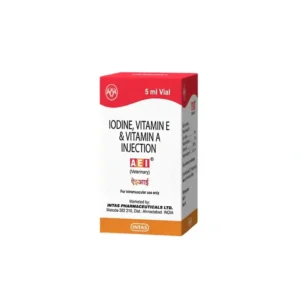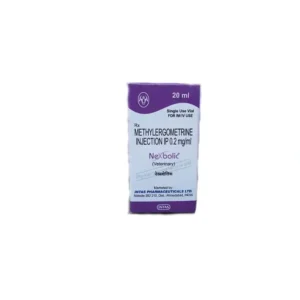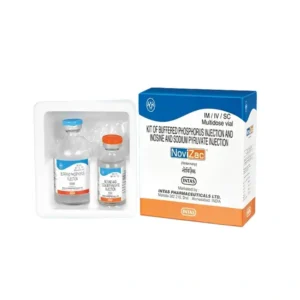Showing all 3 results
Goat & Sheep Breeding & Reproduction: Expert Animal Healthcare Guide
Breeding goats and sheep effectively is essential not only for productivity but also for long-term herd health. When done right, good breeding practices support strong offspring, reduce disease, improve yield, and overall, animal healthcare becomes more manageable. In this guide, you’ll learn everything you need, from selecting breeding stock to caring for young ones, with practical steps and veterinarian-backed advice.
How to Ensure Proper Goat & Sheep Breeding & Reproduction
1. Selecting the Right Breeding Stock
The foundation of successful reproduction is choosing healthy males (bucks/rams) and females (does/ewes). Look for animals with strong body condition, good conformation, and no defects. For females, ensure roomy hindquarters, strong legs, and good mothering instincts. Males should have a strong libido, sound limbs, good weight, and healthy testicles. Avoid animals with dental issues, blind teats, or deformities. Selecting animals like this ensures that breeding improves the overall herd and reduces veterinary issues later on.
2. Understanding Puberty, Oestrous Cycle & Optimal Breeding Age
Goats and sheep reach sexual maturity at different ages depending on breed and management. Generally, goats are bred at about 10–15 months old or when they reach 70% of their adult body weight. Sheep are typically ready around 18–24 months in many indigenous breeds.
Knowing the oestrous (heat) cycle is crucial. Goats show estrus every 18–21 days; sheep every 16–17 days. Signs may include mounting, vocalisation, swollen vulva, and restlessness.
3. Nutrition & Body Condition Before Breeding
Nutrition plays a huge role in reproductive success. Animals in poor condition produce weaker offspring, while overly fat animals may have complications. Key points include:
- Flushing: Increase feeding (concentrates or lush pasture) 2–3 weeks before breeding to improve ovulation and increase the chances of twins or multiples.
- Balanced Feed: Provide minerals and vitamins, especially zinc, selenium, and copper (in appropriate levels).
- Parasite Control: Deworm animals before breeding season to improve fertility.
4. Timing & Seasonality
In many regions, goats are less seasonal breeders, while sheep have more defined breeding seasons. To improve survival and yield:
- Time breeding so births (kids/lambs) occur during moderate temperatures and when feed is abundant.
- In India, post-monsoon (September–October) and spring (March–April) are common breeding seasons.
5. Mating Techniques & Artificial Insemination
Different techniques can be used depending on your management system:
- Natural Mating: Bucks or rams are allowed to mate during heat. Simple but needs observation.
- Pen/Hand Mating: Controlled breeding to manage pairings and track records.
- Artificial Insemination (AI): Uses stored semen from superior males. Improves breed quality and controls genetics. Requires accurate timing and veterinary support.
6. Pregnancy Care & Birthing
After successful breeding, monitor females closely. Provide balanced feed and reduce stress. Ensure a clean, safe shelter for birthing. Watch for signs of labour and assist when needed. After birth, ensure newborns receive colostrum within a few hours—it’s vital for immunity and survival.
7. Record Keeping & Genetic Improvement
Maintain records for breeding dates, births, health, and growth. Note which male bred with which female and track litter size and performance. Select animals with better fertility, disease resistance, and maternal traits. Avoid inbreeding by rotating males or introducing new genetics.
Frequently Asked Questions (FAQs)
1. At what age should goats or sheep start breeding?
Goats can breed at about 10–15 months and sheep at 18–24 months, usually once they reach 70% of their adult body weight.
2. How often do goats and sheep go into heat (estrus)?
Goats go into heat approximately every 18–21 days, while sheep every 16–17 days. Heat typically lasts 24–36 hours depending on age and breed.
3. Does AI work well in goats and sheep?
Yes, when timed correctly and performed by trained professionals. Heat synchronisation and good semen management improve conception rates and help with genetic improvement.
4. How should I feed breeding females for the best reproduction results?
Provide a balanced diet with quality forages and concentrates, supplemented with minerals and vitamins. Ideal body condition—neither too thin nor too fat—is key for fertility and healthy pregnancies.
5. What are common reproduction problems in goats & sheep, and how to prevent them?
Common issues include poor heat detection, low conception rates, and birthing complications. Prevent these with proper nutrition, disease control, hygienic housing, and veterinary support for breeding or AI.




 Home
Home  Wishlist
Wishlist  Checkout
Checkout  Dog
Dog Cat
Cat Cattle
Cattle Poultry
Poultry Goats & Sheeps
Goats & Sheeps Equine
Equine Fish
Fish Bird
Bird Pharmacy
Pharmacy